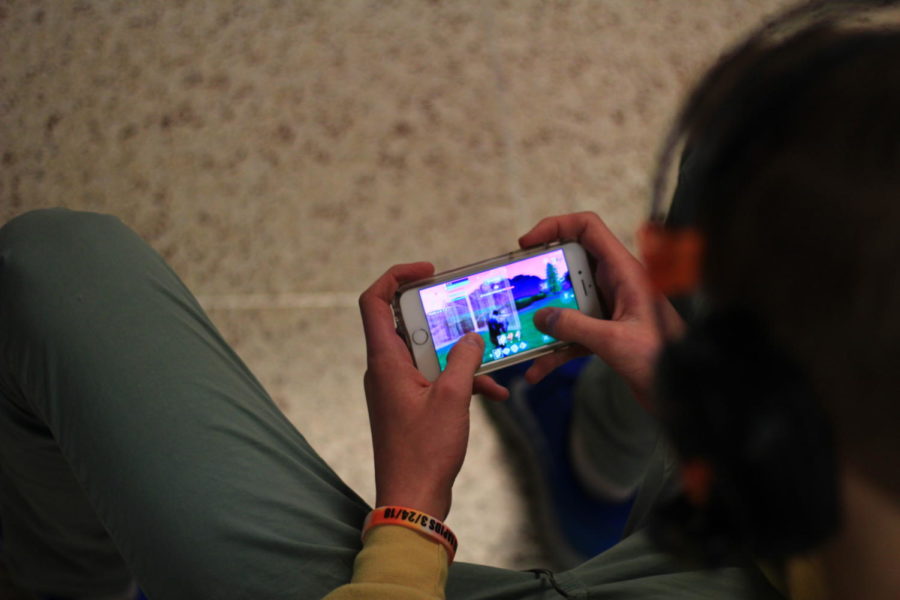Fortnite all day all night
March 30, 2018
Epic Game’s viral hit game “Fortnite” has taken the free time of gamers and non gamers alike by storm. Fortnite follows the same formula as PlayerUnknown’s Battlegrounds (PUBG), though PUBG was created for a more hardcore audience, likely containing veterans of other intense shooters such as Counter Strike, Rainbow Six, and Battlefield. “I got tired of Call of Duty. I was really good. I’m different from the Fortnite trend, because I’ve been playing for a while,” Robby Hooker ‘19 said.
The formula of the “battleground” type game is simple: Be the last one standing. A game of Fortnite starts with players skydiving and gliding onto an open map divided into separate sections. Generally players look to “drop” into a zone with weapons, consumables, and materials used for building. The infamous “Tilted Towers” is generally the most contested and “hottest” area in the game, and dropping into it is only for experienced players. You’re most likely to encounter an early fight there.
“A lot of games are trying to do simulations,” Hooker added. “Fortnite has a lot of unrealistic animations,” which is different from most modern shooters.
Time is the aspect of Fortnite that makes it’s gameplay so unique. Players will look to stock up on “loot” throughout the course of the game, but as time passes, the “storm” which is the boundary that players must stay within, will shrink and force all the remaining players into one area. This feature ensures that as the number of remaining players shrinks, meaningful encounters will still take place.
The feeling of getting to the final five or ten players in a match is, as described by most who frequently play, exhilarating. Fortnite is a game full of disappointment, because once you’re picked off by another player, your game is over and you have to join a new lobby for another chance at the “dub” (win). Finally getting close to the win will have players standing up from their couches or shouting callouts with their teammates in voice communication.
With such a simple formula, why has Fortnite usurped the Twitch streaming numbers of League of Legends, the previously most streamed game? Why does it seem like every guy from middle school, to high school, all the way to college, plays Fortnite? And most importantly, how did Fortnite turn athletic non-gamers into pros?
First of all, Fortnite is an extremely replayable, addicting game. There’s always something to do, from looting, to building, to simply looking for a gunfight. Every match of Fortnite can play out differently, since loot is randomized, and the final zone that the storm eye will eventually end up at is also different every time. Every match gives the player new opportunity to win. This is perhaps the most important aspect of Fortnite’s popularity; even new players have the opportunity to win. By the nature of any battleground type game, even the best players can get picked off at the start by a lucky noob with good loot, giving the less experienced players an opportunity to win, or at least finish within the final five. It’s opportunity that makes Fortnite so addictive. “It’s easy to pick up. You can play with your friends, and it’s free,” Luke Jekkals ‘19 said.
Fortnite’s biggest streamer, “Ninja”, recently streamed himself playing Fortnite with celebrities Drake and Travis Scott, resulting in the destruction of the record for most viewers on a single stream, which was previously held by a League of Legends world championship, a multi-million dollar event. The fact that even the celebrities that the average joe looks up to play Fortnite was likely what brought six hundred thousand people to Ninja’s stream.
Fortnite really is that big. Though PUBG is hot on it’s heels in terms of player count as revenue (PUBG made $700 million in 2017, according to research market firm SuperData), no game in recent years has come close to the meteoric rise in popularity that Fortnite has experienced.


